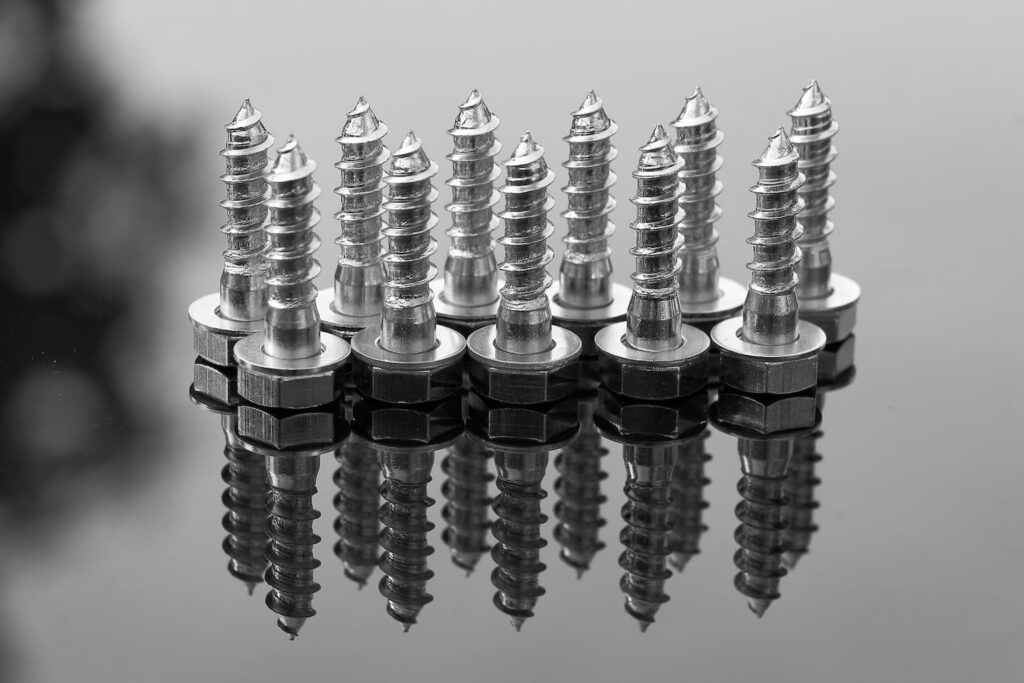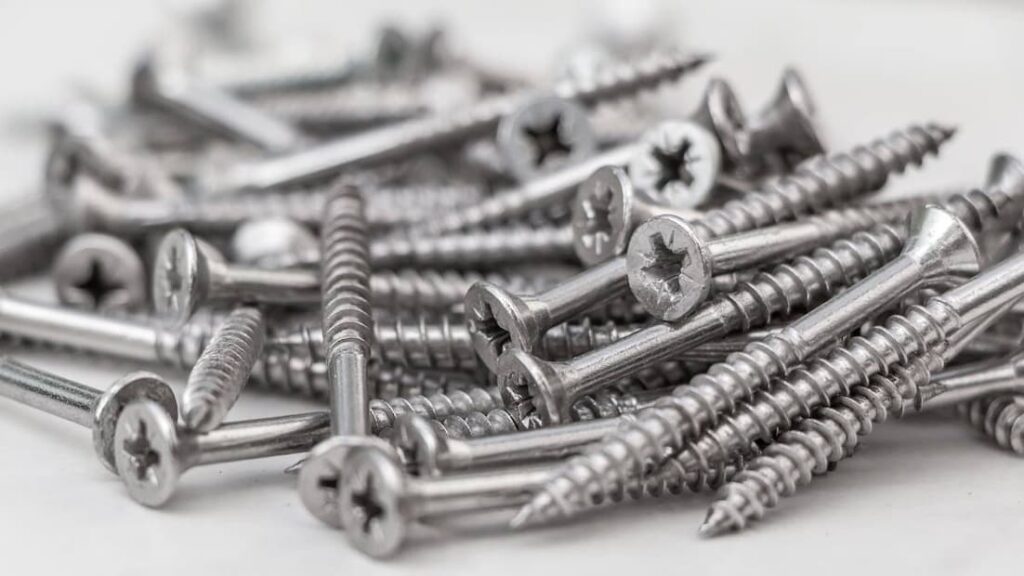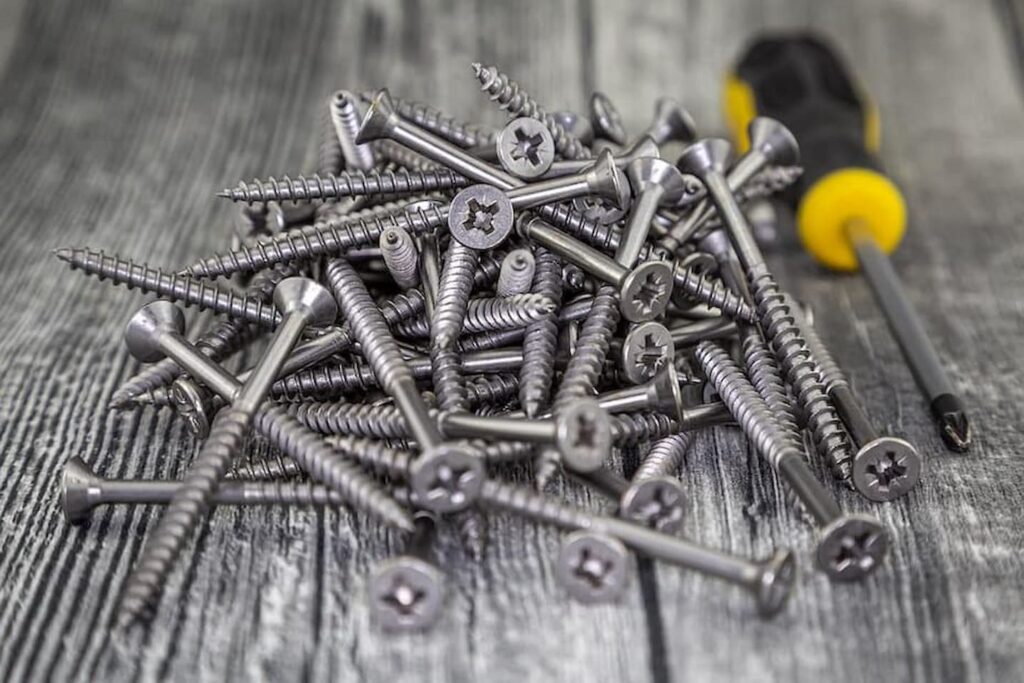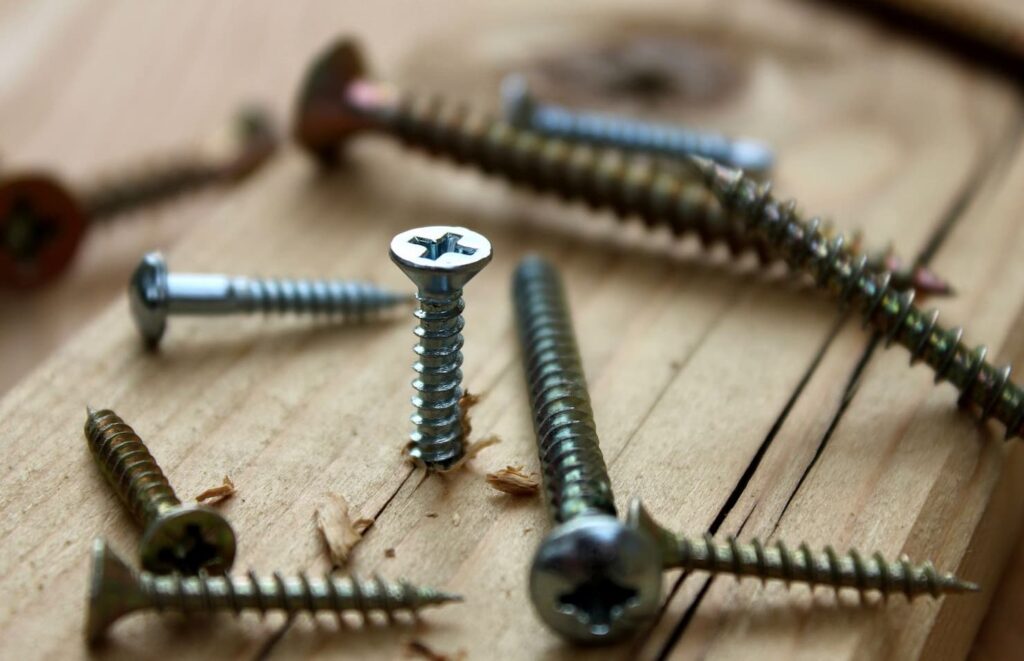The huge selection of fasteners means you’ll need much consideration when choosing what’s right for your project. Bolts, screws, nails, nuts and washers come in hundreds of different types and found in different applications. This comprehensive guide to screws should help seasoned pros and avid DIY-ers alike choose the right screw with the highest strength in the dimensions and materials suited to the application. These are just a few considerations, so read on to learn more.

What Exactly Are Screws?

Screws are a type of threaded fastener which can be tightened or released by applying twisting force to the head. They are used to connect two or more materials, products or workpieces. Wood screws for instance join different wood pieces, machine screws tighten metal parts or pieces in machines and large industrial equipment, while hex-head coach screws have the needed strength to deliver secure connections in heavy-duty use, such as construction projects.
Parts of Screws
To understand how screws work, why they are so effective, and why there are so many different types it helps to have a general understanding of the different parts they’re made of. Screws consist of 5 distinct parts:
- Head – this is the topmost and widest part and allows tools such as screwdrivers and drills to apply the needed torque to twist the fastener in place. The head additionally prevents the fastener from becoming undone. There are different head shapes, sizes and profiles.
- Drive – this is the internal or external part, used with different tools. Simple slotted drives are tightened or loosened with a flathead screwdriver, while external drives require a wrench.
- Shank – the shank is the body of the fastener, connecting the head and tip. Shanks determine the load screws are capable of, and how strong they are to external forces. They are partially or fully threaded. The smooth or unthreaded portion is called a shoulder and compensates for bearing forces in moving parts.
- Thread – threads are the spiralling grooves in the shank, which secure the fastener to the substrate or object as torque is applied. Self-tapping screws additionally create their threads in the material into which they’re driven. Like head and drive types, there are also different thread types, including metric and British Standard Whitworth imperial threads. Another consideration is thread pitch or the spacing between the grooves.
- Tip – the tips or points are the first screw parts that come into contact with the workpiece. The three main types include thread-forming, thread-cutting and the self-drilling tips in screws of the same name. The type of tip determines how easily the fastener penetrates the material, the holding strength, and how easy it is to remove.
How Does a Screw Work?

Fasteners of this type work by converting torque or rotational force into linear force. Tips can be inserted into pre-drilled pilot holes or create their own (as with self-drilling screws), while threads align the workpieces and create the needed holding strength by applying pressure to the surrounding material. This depends on the width and length of the thread and the thread pitch.
The tools that convert the turning power into linear force differ, ranging from screwdrivers (flathead, Phillips, Torx, Hex, Pozidriv etc) to hand and power drills, impact wrenches, and more when supplied with the right collets and attachments.
Common Types
These fasteners can be categorised by the materials they’re used with, specific design features and purpose. Some common types of screws include:
- Wood – whether you’re a carpenter, woodworker, cabinetmaker or enjoy making DIY objects made of hard or softwoods, you’ll need a selection of wood screws. They’re designed with easier threads to prevent splintering, scuffing or cracks, have sharper tips to penetrate wood of different hardness, and have high holding power. Many head designs exist, but flat, pan and oval heads are the most widespread.
- Chipboard – wood types can easily splinter chipboard, so use specialty chipboard screws instead. These have slimmer shanks and a coarser thread pitch to dig deeper into the material.
- Concrete screws – besides concrete, you’ll be using these in brick, concrete block and stone. They’re usually fully threaded and have deeper threads to ensure higher holding strength than most other types. Most are made from high-grade steel and are coated against rusting.
- Machine screws – these fasteners are found in machinery, car parts, electronics and household appliances (among other uses) and need a pre-drilled and tapped hole to secure two parts together. Often they have fully threaded shanks, and usually a flat or countersunk head for better looks in the parts they join.
- Coach – use coach screws when attaching bigger and heavier pieces of timber or metal sheet. They’re recognisable by the square or hexagonal heads, full threads, and pointed tips.
- Security screws – these have tamper-proof heads, are harder to remove, and have increased impact resistance. They’re typically made of zinc-plated or galvanised steel.
Other types include smaller, half-threaded hinge screws (usually with flat or countersunk heads) to secure doors, windows and cabinets; thumb screws with bigger knurled heads for easier torquing by hand; wing screws seen in furniture and industrial uses, hook screws used for attaching overhead items, and many more.
Material Options and Finishes
Materials determine strength, resistance to chemicals, heat and corrosion, and factors like conductivity, weight and overall price. Stainless steel is a good choice for areas with high moisture and chemicals, hardened steel screws have increased durability and strength and are ideal for construction, industrial and heavy-duty use, while plain steel fasteners have decent holding power, but will corrode over the long run.
Choose aluminium for lower weight, rust resistance and good thermal properties; brass for high heat and corrosion resistance while offering good looks in decorative applications, copper and copper alloys for low wear, and titanium for very low weight, high strength and lasting durability.
To improve strength, weathering properties and appearances, many screws undergo further treatment. Zinc plating and galvanisation are inexpensive ways to increase rust resistance, electroplating offers an appealing chrome look and increased durability, while black oxides up abrasion and rust resistance.
Specific mechanical and chemical requirements in typical industries where screws are used are often regulated by relevant bodies. For instance, refer to the National Construction Code for fastener requirements for construction purposes or State and Federal standards for specific types.
How Are Screws Sized?

Sizes are another vital factor when looking to buy screws. Consider gauge or diameter, lengths and thread pitch. Diameters refer to the outer section of the thread, lengths are measured from below the head to the tip (except in countersunk types) and thread pitch is the distance between individual thread grooves. Fasteners with finer threads generally are stronger.
Measurements can be in metric units, usually millimetres and adhere to most international standards (ISO and DIN), or in inches and based on older imperial or customary units.
FAQs
How strong are screws? – Strength depends on diameters, lengths thread and head types. They are suitable for light to medium loads, with materials another major factor. Screws are about twice as strong as nails of the same size but are surpassed by bolts. Concrete types are some of the strongest types.
How to store screws? – If you’re a tradie or have a hand in DIY, then storing screws and fasteners is as simple as buying half a dozen transparent containers and sorting screws by type and size. This reduces clutter, lets you distinguish between different fasteners, and speeds up work. Alternatively, use the supplied dividers and trays in toolbox systems, offered by the big brand names.
How to remove rusted screws? – Rusted screws are commonplace, but there are a few ways to deal with them. One is to strike the head with a hammer, apply a rust penetrant or lubricant to loosen up the rust, let it sit for a while, and then use the appropriate screwdriver to get it loose. Alternatively, use a heat gun where applicable to break up the rust, before using water to cool and shrink the screw, before removing it.


